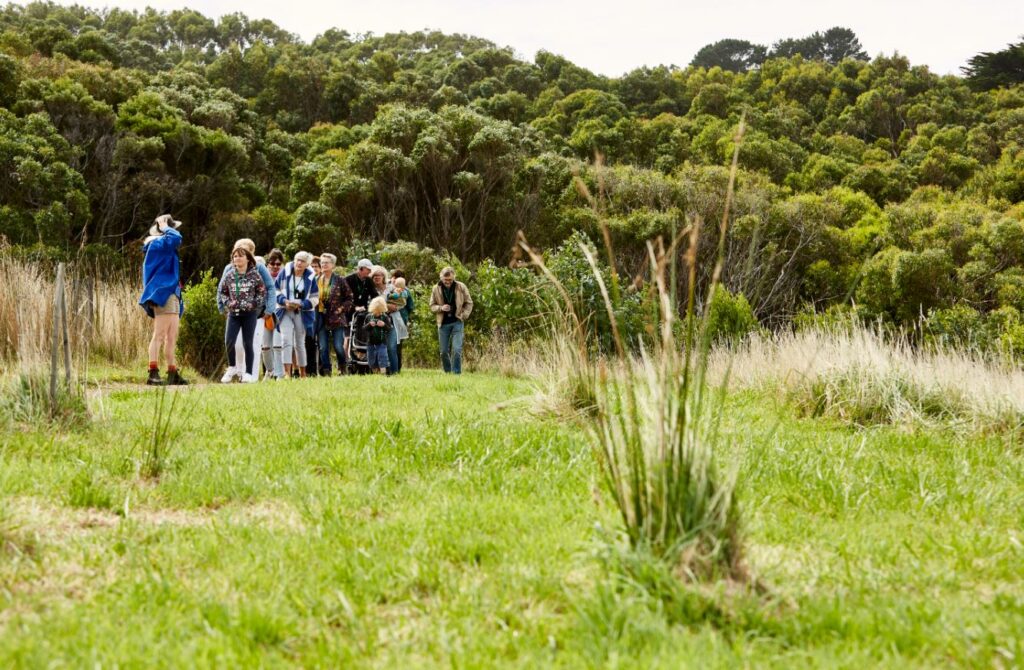The Great Ocean Walk (or GOW) is fast becoming as iconic as the road it’s named for, making Apollo Bay one of the Great Ocean Road’s best hiking destinations. While you’re here, why not try these six other great bushwalks which are favorites with the locals – as recommended by our Wildlife Wonders staff.
Find out more about each walk below, or by clicking the icons on the map.
Walk 1. Marengo to Wildlife Wonders
Recommended by Charlie Corke, Chair of the Wildlife Wonders Board
60 to 90 minutes (3.5km) one-way or 7km return by the same path.
Park in the Marengo Beach car park, just outside the Caravan Park (or get dropped off there). Walk through the Caravan Park and find the Great Ocean Walk path that runs from the west side of the Park at the very far end (look out for the little yellow GOW signs).
Continue on the Great Ocean Walk west towards Cape Otway. This takes you along a well-constructed, well signposted, undulating path that hugs the coastline and takes you across two stunning beaches and over stone steps trough coastal tea tree.
As the path rises to take you over Bald Hill take a moment to sit on the bench just beyond the top of the hill and look along the coast.
A bit beyond the bottom of Bald Hill when you come to a small stream that flows over the path, look out for a gate with a green Wildlife Wonders sign on your right. Go through the small stile at the side of the gate walk a few yards and take the path to your right up the gully (there is a green arrow to show you the way).
Follow the path up the gully until you reach the Wildlife Wonders predator proof fence. Keep straight on following the track that runs alongside the fence, walk past the dam (that is inside the fence) and on up the hill. You need to watch your footing for the last 200m as this section of the track is steep and gravelly. The walk ends in the Wildlife Wonders car park.
When you get to Wildlife Wonders you will deserve something nice from the Emu Café – the only coffee shop on the entire Great Ocean Walk. Find out more about this walk.
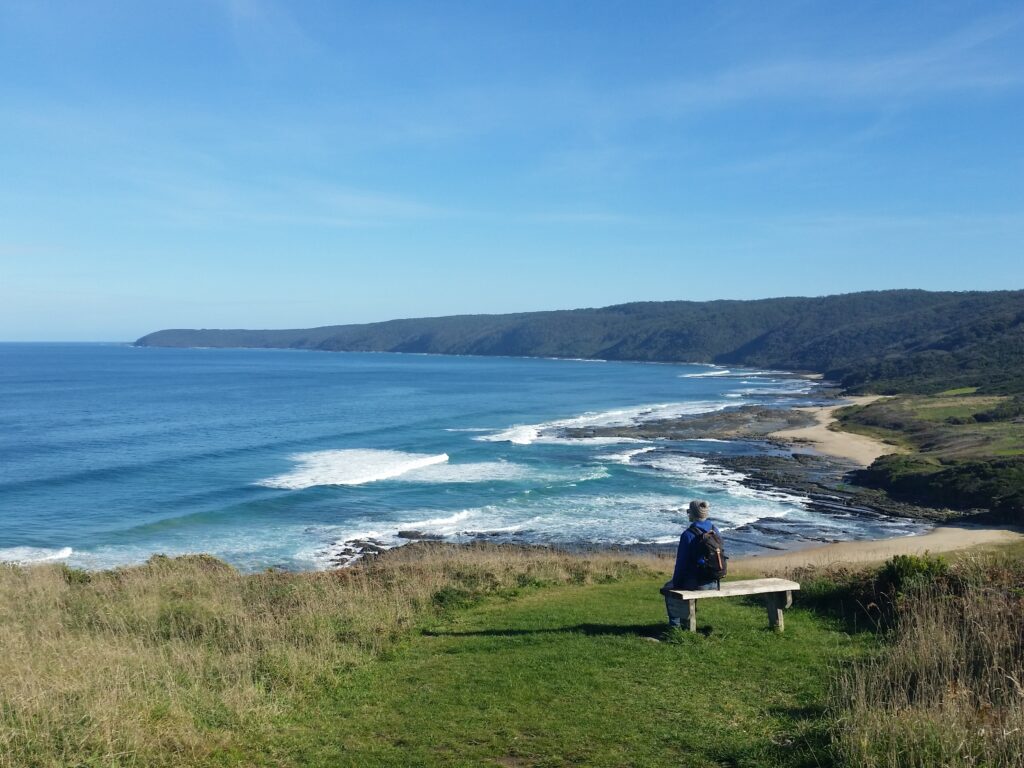
Walk 2. Take a stroll at Marengo Nature Conservation Reserve
Recommended by Jane Buckingham, Wildlife Wonders Visitor Experience Officer
30 minute easy loop walk along fire trails and dirt roads.
A hidden gem just a 5-minute drive from Apollo Bay, the Marengo Nature Conservation Reserve is a small patch of remnant heathland offering short walks that are perfect for early morning walkers, small humans, or even dogs (on a lead).
As you head south from Apollo Bay turn in to Newcombe Street and park your car at the corner of Manly Street. You can then walk up the dirt road to a gate that gives you access to the Reserve and at the end of the loop you’ll walk back along Manly Street to your car.
The walk around the Marengo Nature Conservation Reserve follows several fire trails and is easy going – it should only take you around 30 minutes. But in that time, you’ll be transported back to what Marengo and Apollo Bay might have looked like before European Settlement.
The 26 ha includes Eucalyptus Woodlands, heathland and wetlands and offers great birdwatching opportunities, as well as the chance to spot animals like koalas, brush-tailed possums and even echidnas in the summer months.
If you’re feeling more ambitious you can extend this walk by starting in Apollo Bay and following the foreshore track from to Marengo, which is 3km and takes about another 30 minutes each way.
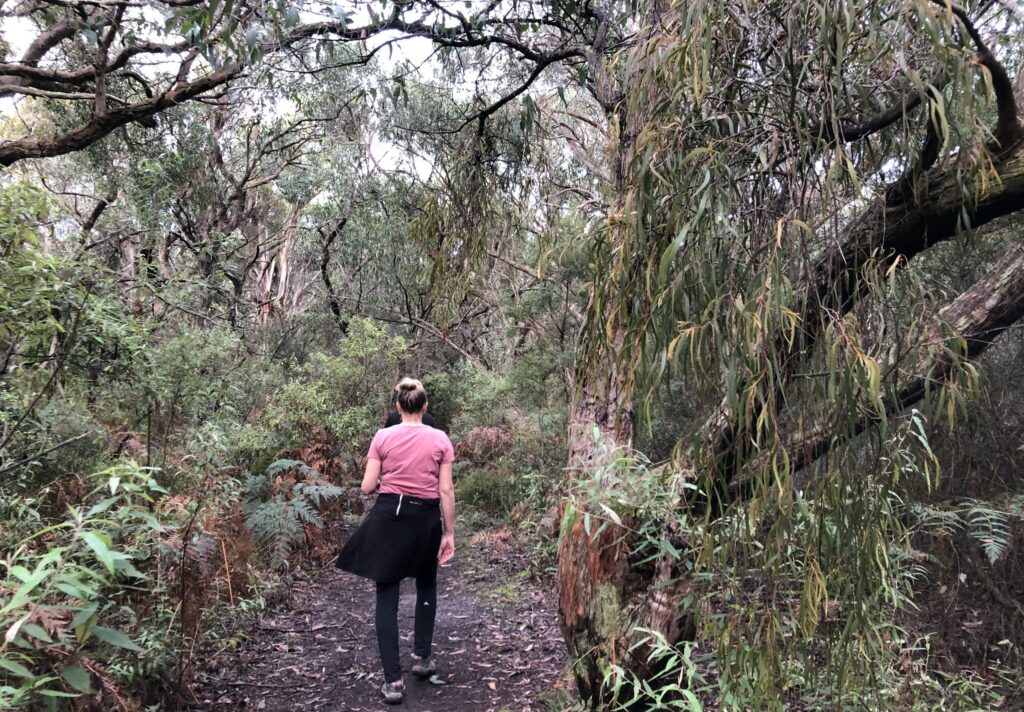
Walk 3. The Blanket Bay to Cape Otway Lightstation section of the Great Ocean Walk
Recommended by Lizzie Corke, Wildlife Wonders Founder
4 hours (10 km) one-way starting at the Blanket Bay Campground.
This short section of the Great Ocean Walk can be done in a day and offers views right along the coastline on the protected eastern side of Cape Otway.
The walk alternates between bushland, where you can put your wildlife-spotting skills to the test and coastal cliff and beach walking. If you keep your eyes peeled in the coastal woodlands, you might see echidnas, koalas and wallabies as well as an abundance of bird life, from kookaburras to gang gang cockatoos.
As you emerge from the bush you head down to the beach for a chance to get the sand between your toes, and maybe even wade across the inlet, before taking on the 300 steps to the top of Parker Hill. This is the hardest part of this easy-moderate walk.
From this point on you can enjoy the coastal views from on high as you make your way towards the beacon of the lighthouse.
The Cape Otway Lighstation is Australia’s oldest surviving lighthouse, built in 1848 and visitors are welcome. Car parking is available to lighthouse so you can car-shuffle.
The 22 unpowered campsites at Blanket Bay Campground can also be pre-booked but be aware that it is unsuitable for caravans. Dogs are not permitted in the campground or on the walk. Find out more.
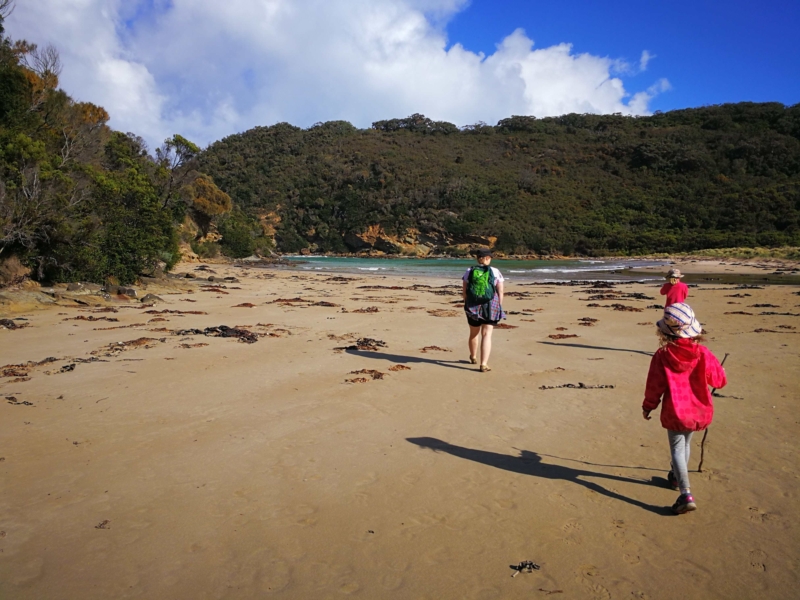
Walk 4. Make it an overnight walk from Wye River to Jamieson Creek
Recommended by Toni Stevens, Wildlife Wonders Communication Manager
4.5 hours (11km out and back) with option to camp at Jamieson Creek Campground (booking required).
A short half-hour drive (30km north) of Apollo Bay) is this beautiful walk that runs parallel to the Great Ocean Road, allowing you to take in the spectacular coastal views at a slower pace. The main trail begins at the top of Olive Street in Separation Creek, you can park the car at Wye River, then follow “Paddy’s Path” to Separation Creek, which adds 1km to the walk.
The walk is moderately challenging as you cross multiple creeks and gullies, heading almost down to sea-level, then back up again to enjoy stunning views through tall eucalypts to the Southern Ocean beyond.
Storyboards along the route provide information on the history of the area, and it’s also fascinating to see just how well the forest has grown back since the devastating 2015 bushfires.
After a relatively short 5.5 km from Separation Creek you’ll come upon the Jamieson Creek Campground. Set amongst coastal woodlands and tall eucalypts this campground offers basic bush-camping with non-flush toilets, shared fireplaces, and unpowered sites.
It’s the perfect place to kick back and enjoy a quiet afternoon before making the walk back to Wye River the following day. Please note that advance bookings are required for the campground and no dogs are allowed in the campground or on the walk.
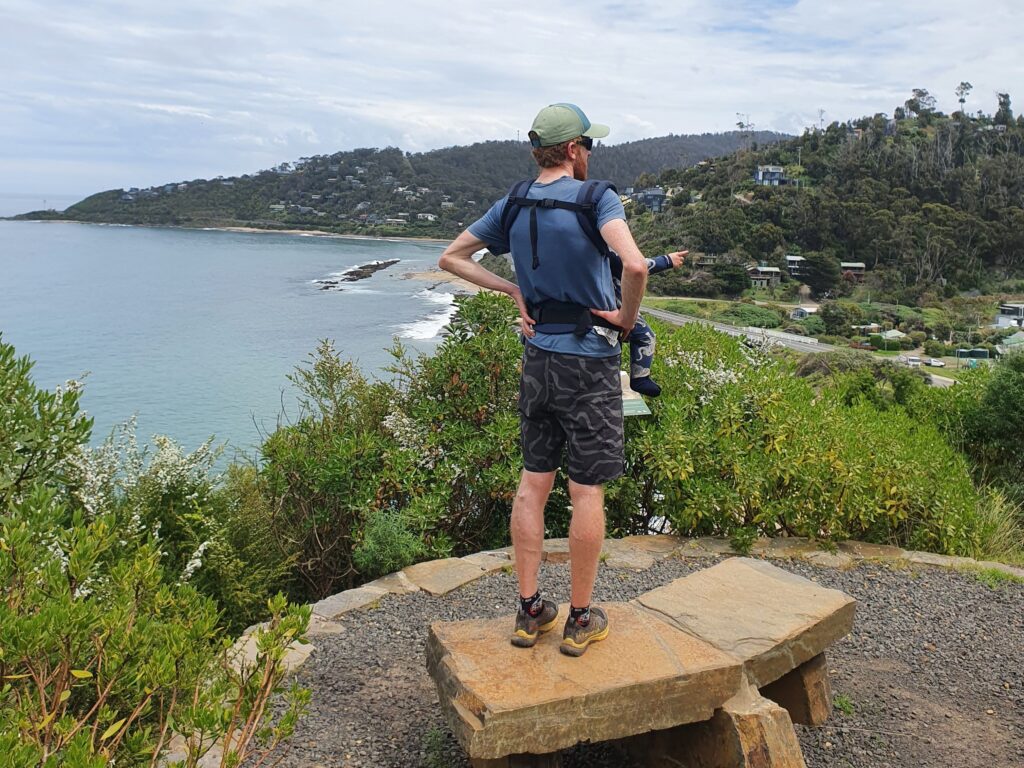
Walk 5. Visit Stevensons Falls, the Otways most accessible (and recently upgraded) waterfall
Recommended by Tania Jacobs, Wildlife Wonders Marketing Manager
500m or 4.6km options with free camping, 45 minutes from Apollo Bay and accessible.
Stevensons Falls is one of the Otway region’s most accessible and spectacular waterfalls which can be accessed via a short 500m return walk from the day visitor and picnic area, or a longer 4.6km walk from the campground. After its recent 2023 upgrade, the 500m walkway to the waterfall is now fully accessible for people of all abilities and includes a new (wheelchair friendly) viewing platform at the base of the waterfall.
The walk passes by large Douglas Firs and Californian redwood trees which are a remnant of a trial plantation established in the 1980s. From here, the picturesque walk crosses over the Gellibrand River and then continues alongside the river to the new viewing platform at the base of the falls.
To access Stevensons Falls from Apollo Bay, turn onto the Forrest-Apollo Bay Road at Skenes Creek. After 30km (about 30mins) turn left at Upper Gellibrand Road and travel for 4.5 km to the campground. Just inside the campground take a left turn over the bridge and continue on for a short distance to the picnic area where the short walk begins.
Dogs are permitted on leads at the campground and on the walk. Camping is available at 20 free unpowered sites, no booking required.
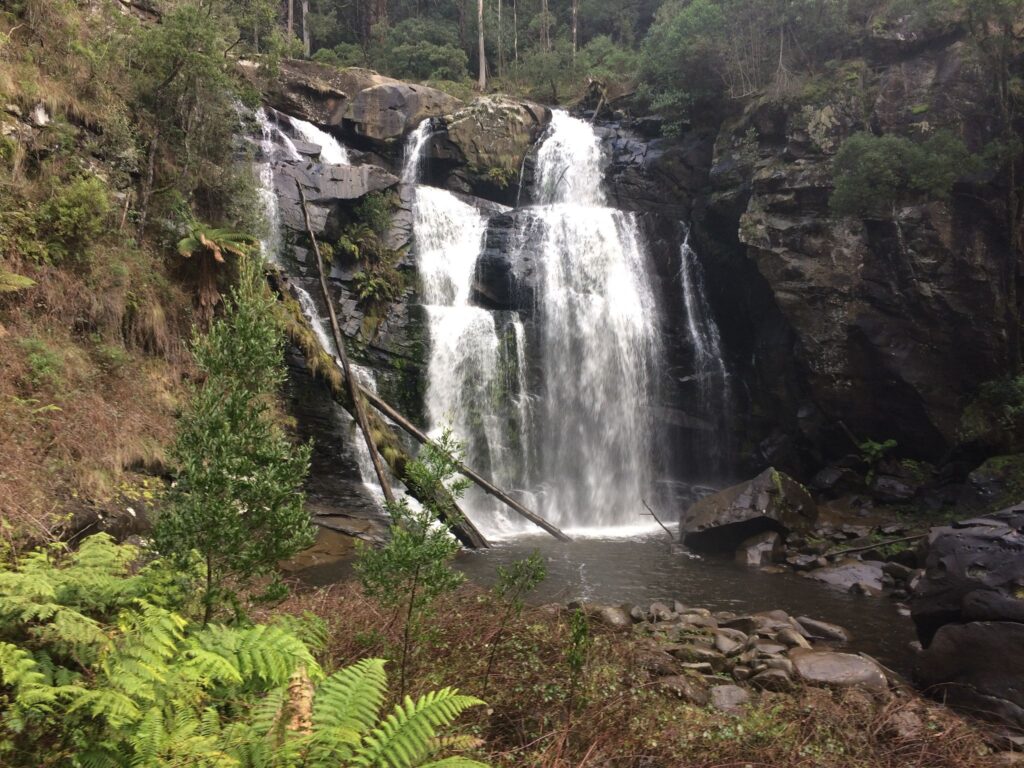
Walk 6. Lake Elizabeth Loop, one of the best bushwalks in the Otways
Recommended by Jyoti Kala, Wildlife Wonders Nature Guide
90-minute (4.3km) loop track with the option for a shorter walk to the jetty.
Lake Elizabeth was created when a landslip created a natural dam, and the still-upright trunks of dead trees, giving an eerie atmosphere to the valley.
A host of birds live in the area and Satin Bowerbirds (the male is a dark satin blue and the female is olive green) are often seen near the camping round. Wrens, robins and grey shrike thrush also visit regularly.
From the campground or day visitor area there is an out-and-back track (1km each way) that takes you to a vantage point over the lake where you can sit on the jetty, take in the serenity, and try to spot a platypus if you’re quiet, especially at dusk.
From the jetty you can continue your walk on a loop track around the lake, starting in eucalypt woodland on the north-facing slopes as the track undulates up and down to the lakes shore, until you reach a boardwalk over the wetland at the eastern end of the lake.
The return journey on the other side of the lake is much more mysterious in the cool shade of the beech trees and tree ferns, with glimpses back over the dead tree trunks in the flooded lake.
Twenty unpowered tent sites with no vehicle access are available at the campground. Dogs permitted in the campground and on the walk as long as they are on a lead at all times. Find out more about camping at Lake Elizabeth.
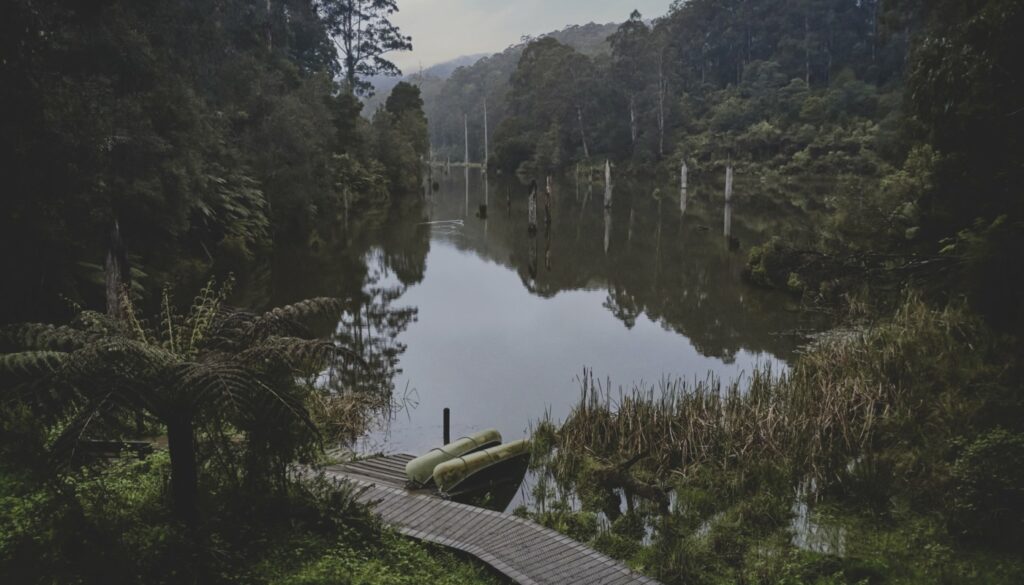
But if you’re after a really special bushwalk in the Otways…
You can also experience the Otways as it was before European settlement right here at Wildlife Wonders.
Koalas, wallabies, kangaroos, bandicoots, potoroos, and even bettongs all thrive in our forested fern gullies and open grasslands, protected from foxes and cats by our predator proof fence.
Our Walk with Wildlife guided tour is a 1.4km guided tour over 75 minutes on a fully accessible path, suitable for both prams and wheelchairs. Or join us for an even more magical Dusk Discovery Tour. Find out more about our guided walks.
We hope you will join us to explore the wilds of the Otways right here in our sanctuary, just 5km from Apollo Bay.
